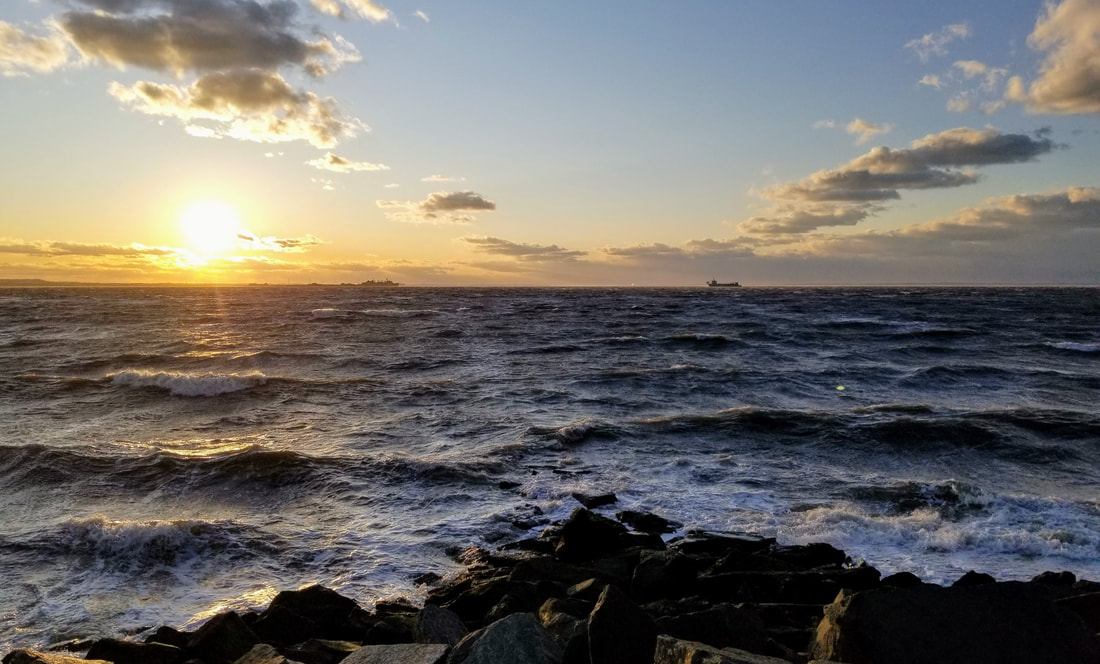 Every year in September, the American Littoral Society and partners typically kick-off the New York State Beach Cleanup (NYSBC), which brings out thousands of volunteers to help collect and document litter on New York's shorelines. The Society's Northeast Chapter has led the NY State Beach Cleanup (as part of the International Coastal Cleanup) since 1985. This year may bring a delay to the start of the 35th Annual NYSBC, but the program's new coordinator is working closely with everyone involved to determine the best strategies for the work in light of ongoing concerns over the spread of COVID-19. Lisa Scheppke, who has focused on marine debris removal during her time as Restoration Project Coordinator for the Littoral Society's Northeast Chapter, is taking over the NYSBC program from Natalie Grant.  ~ Tim Dillingham Executive Director, American Littoral Society It sort of feels like summer. The weather is here, the crowds are (somewhat) cautiously going back to the beaches, and we are seeing the arrival of seasonal wildlife – ospreys, terrapins, butterflies and an increasing number of whales. Amidst these comforting familiar signs of summer, we face new enormous challenges: a pandemic which is showing unfortunate resilience and possible resurgence, a nation struggling to come to terms with racial inequalities and injustice, and an election with tremendous consequences for environmental protection and coastal and ocean protection. These national challenges have cast their shadows on the sunny days and warmer weather. The environmental issues which face our ocean and coasts, as well as marine life and their habitats, have changed little. One of the most persistent is the ever-growing impact of plastics in the ocean.  Asbury Park, NJ – June is National Ocean Month and in celebration of protecting our ocean environment the City of Asbury Park has joined a regional effort to reduce marine pollution, with a special focus on balloon litter. “Reducing the amount of marine debris and plastic pollution, including balloon litter, is so much greater when coordinated and carried out on a regional basis," said Asbury Park Deputy Mayor Amy Quinn. "We are proud to work with the American Littoral Society, other New Jersey coastal communities, and additional partners throughout the Mid-Atlantic region to help protect our ocean and marine life.” The initiative involves partnership in the “Prevent Balloon Litter” website. Other participants include the American Littoral Society, along with environmental programs throughout the Mid-Atlantic region such as the Virginia Coastal Management Program, Clean Virginia Waterways of Longwood University, US Environmental Protection Agency, the National Oceanic and Atmospheric Administration (NOAA) Coastal Management Program, the New York Department of Environmental Conservation, and others. The ocean is a special place that’s worth protecting and, in the face of climate change and unprecedented rollbacks of environmental protections, the ocean needs a voice now more than ever.
At the American Littoral Society and Healthy Ocean Coalition (HOC) we believe that we’re stronger and more influential together, as an inclusive community that loves the ocean. That is why we're dedicating the month of June to help amplify the educational and advocacy initiatives. Throughout the month the Littoral Society and HOC will be drawing attention to ocean issues and hosting online events or activities that will be brought to your attention via social media platforms such as Facebook, Twitter and Instagram. So keep your eye out for additional ways to participate. Moores Beach is among the Delaware Bay beaches in New Jersey that were restored following Hurricane Sandy and is now protected by an inter-tidal reef engineered by the American Littoral Society. The following is a report from our partner Dr. Larry J. Niles of Wildlife Restoration Partnerships. It was initially posted on his website: A Rube With a View. Direct Flight to the Arctic or Stopover?
A migratory stopover for arctic nesting shorebirds must provide each bird the energy necessary to get to the next stopover or to the ultimate destination, the wintering or breeding area. Delaware Bay stands out among these shorebird refueling stops because it delivers fuel in the form of horseshoe crab eggs giving birds options. Our telemetry has shown that Red knots, the species we best understand, may leave Delaware Bay and go directly to their Arctic breeding areas, or stopover on Hudson Bay. The choice of going straight to the breeding area or stop at another stopover may be critical to understanding the ecological dramas now underway on Delaware Bay. This year has been like none of the 23 years we have studied shorebirds and horseshoe crabs on Delaware Bay. As I described in these updates, persistent northeast winds caused two unusual conditions that affected red knots and the other shorebirds species, ruddy turnstones, semipalmated sandpipers, dunlin, short-billed dowitcher, and sanderlings. First, the wind blowing in from the cold ocean chilled the bay and slowed the horseshoe crab spawning to nearly a standstill until the last week of May. Whereas in other years, we would have seen tiny ribbons of eggs threading the tideline, this year we have none. Shorebirds depend on this natural largess, gobbling eggs with almost no effort and laying down weight like starving people at a fast-food restaurant. |
Archives
July 2024
Categories
All
|




